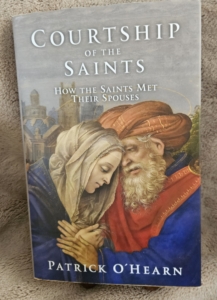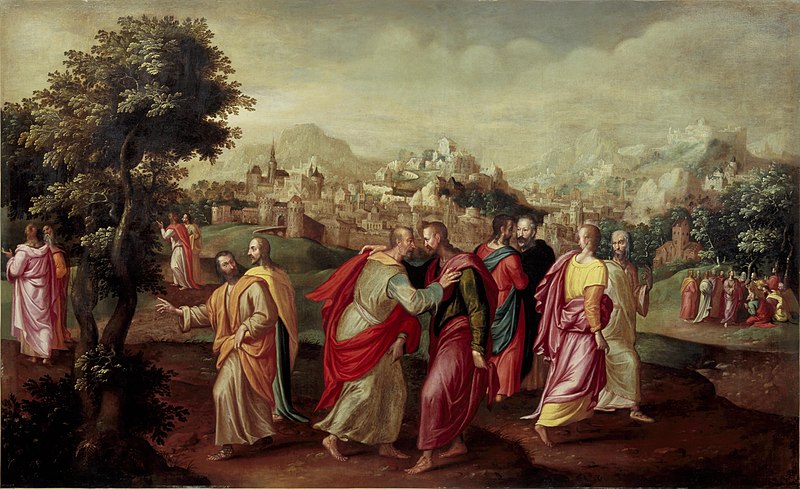Mountaintop Moments

Copyright 2025 Amy Schisler, all rights reserved.
“Master, it is good that we are here; let us make three tents, one for you, one for Moses, and one for Elijah.” (Luke 9:43)
I recently led a retreat for a parish in Arkansas on the Luminous Mysteries of the Rosary. One of those mysteries is today’s Gospel, a story with which I’m sure most of us are familiar. Jesus takes His chosen three Apostles — Peter, James, and John — up to the top of Mount Tabor to pray.
A Vision of Heaven
As the three Apostles look on, Jesus is transfigured before their eyes, “his face changed in appearance and his clothing became dazzling white.” The three men saw Jesus in all His glory, the way He is in Heaven, the way we hope will be our reward in the afterlife. The glory of Jesus and the understanding that this is a glimpse into the awesomeness of eternal life were not lost on Peter. He felt the importance of this moment.
And it gets even better. While in His glory, Jesus is joined by Moses and Elijah “who appeared in glory and spoke of his exodus that he was going to accomplish in Jerusalem.” Overwhelmed by what he is seeing and hearing, Peter naturally wants to cling to this moment. He wants to build tents there on that spot so they can stay there with Jesus forever.
Mountaintop Moments
As I told the ladies at the retreat, Peter was experiencing a true Mountaintop Moment. Often these moments are fleeting or come only after a beautiful spiritual experience. When we attend a meaningful retreat or go on pilgrimage, we typically feel the same as Peter. We are so wrapped up in the divine, influenced by the Holy Spirit, and full of zeal, we don’t want that time to end. Weddings, births, and other momentous occasions also lend themselves to this feeling.
In scripture, God is often revealed on the mountaintop. In Genesis, God speaks to Abraham from the mountain when He points out the stars and makes His covenant with His people. It is on Mount Zion where Abraham is to sacrifice Issac before the Lord intervenes. In Exodus, God appears to Moses in the burning bush at the top of a mountain, and it is on the top of Mount Sinai where Moses receives the Ten Commandments. Solomon builds his temple on Mount Zion, and Isaiah tells of the New Eden built upon a mountain. The Sermon on the Mount is given on a mountain, and Jesus often prays on the Mount of Olives. There is divine beauty on the top of mountain like no other place.
Is it any wonder Peter wanted to remain on the mountain?
Coming Down the Mountain
After those moments when we feel closest to God — on pilgrimage, when we say “I do,” after we receive the Eucharist — it’s so difficult to watch the glory fade, to see our lives returning to the ordinary, to go down the mountain. A day or two after a pilgrimage ends, I always send an email to my pilgrims letting them know that the letdown they may be experiencing is normal; it’s not easy returning to real life. It’s not easy coming down from the mountain.
However, we must come down because, like Jesus, like Peter, James, and John, coming down the mountain means going on mission. After coming down the mountain, Abraham surrenders his life to God, Moses leads the people to the Promised Land, Jesus comes down from the Mount of Temptation and gathers His Apostles. We must come down to finish the task God has given to us.
Returning for Mission
Peter wanted to stay, but his mission was far from over. He would become the rock, the foundation of the church. He would lead the Church and its members. He would preside over the first council of the Church in Jerusalem, and he would begin the conversion of Rome.
As a mountain climber, I can assure you that there is no more spectacular view than from the top of a mountain, and it’s hard to turn away from the vast beauty to make the trek back to the bottom. Alas, we’ve all heard, what goes up must come down. It’s part of God’s design, and there’s a reason for that. We were made for more than just appreciating the view. We were made to take that wonder and awe back down the mountain and share it with others.
When you have your next mountaintop moment, ask the Lord, what it is you are meant to do when you come down. How can you take the experience and turn it into something that glorifies God here on earth, even in the valleys and on the plains?
“Let us make best use of the fleeting moments.” (Saint Marianne Cope)

Copyright 2025 Amy Schisler, all rights reserved.
Copyright 2025 Amy Schisler



 A mountain-top experience.
A mountain-top experience.




 Photo by Eugenia Remark: https://www.pexels.com/photo/decorated-cards-golden-plate-and-ring-in-box-14784845/
Photo by Eugenia Remark: https://www.pexels.com/photo/decorated-cards-golden-plate-and-ring-in-box-14784845/ into the 21st Century. They shaped the church in some way through their sacrifice and devotion to one another and to their families by making the prayer their foundation and God the center of their lives.
into the 21st Century. They shaped the church in some way through their sacrifice and devotion to one another and to their families by making the prayer their foundation and God the center of their lives.



